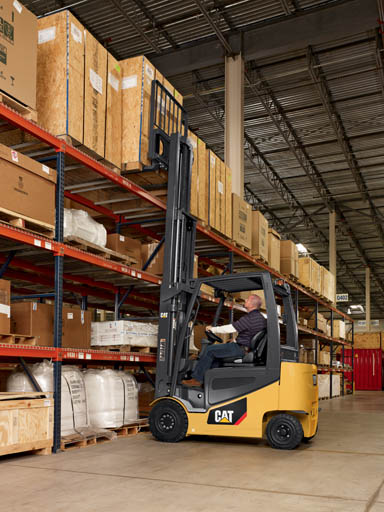
The Latest
Why Converting Your Fleet to Electric Makes Sense: Advantages of Electric Forklifts
Part Two
This is the second in a three-part series about the benefits of converting your forklift fleet to electric motors. Read the first installment: Lower Total Cost of Ownership, including our sample ROI calculator.
Advantages of Electric Forklifts
Clean energy is becoming more mainstream
The global focus on converting from internal combustion engines to electric ones isn’t just limited to personal automobiles. Electric motors of all sorts have become popular in industry because of their reliability, clean emissions, and low maintenance profile. You may have heard that in early 2020, Amazon committed to purchasing 100,000 electric delivery vans from Rivian in order to reduce its carbon footprint. If the world’s largest e-retailer sees the benefit of conversion, it’s worth taking note.
Improved safety, ergonomics, visibility, air quality and sound levels
With electric forklift motors, obviously no liquid propane (LP) tanks are required, which means your operators no longer need to change them or fill them, which decreases potential environmental hazards from a spill, decreases opportunities for injury, and reduces storage capacity needs. The lack of tailpipe emissions and heat venting from the engine means cleaner air and a more comfortable environment for your warehouse employees. You’ll also save on your energy bill because you’ll no longer need to vent the facility during the winter months. And without all those internal combustion engines around, your warehouse will be easier on everyone’s ears.
Superior forklift truck capabilities
Besides the very attractive cost savings and ergonomic and environmental improvements, electric forklifts offer a lot of practical advantages in your application. Electric forklifts are smaller than their IC counterparts which keeps the turning radius smaller, increases lift speed, and decreases traveling speed. You’ll also enjoy the benefit of higher load and lift capacities.
Electric lift trucks work well in narrow or very narrow aisle applications. Smaller trucks mean accessibility to tighter places, and case/stock picking equipment is not available in IC configurations. Stand up electric products provide better ergonomics and visibility than IC. Supplemental equipment, like tow tractors, allow for superior visibility, maneuverability, and transportation efficiency.
When it comes to benefits for storage in your facility, electric forklifts have double and triple pallet length equipment that allows for increased productivity. “Man-Up” equipment allows for both full-pallet and/or “less-than-full-pallet” order selecting. Also, configurations such as double-deep reach, side-load, and 4-way steering further “maximize the storage cube” (i.e., using every inch of the depth and height available).
Industry R & D is focused on electric products
With a national and global push towards clean energy, the material handling industry is responding by focusing its research and development budgets on innovations for electric equipment. For example, Jungheinrich’s entire line of forklifts are energy-efficient options for organizations looking to decrease their carbon footprint. Over 18 years ago, Jungheinrich developed the first 3-phase AC technology with their products running up to two shifts on one battery charge, 0% noxious emissions and low energy consumption.i They continue to develop high-quality and efficient electric products that prioritize clean energy.
When it comes to taking your organization electric, it doesn’t have to be an overwhelming process. With the right steps in place, you can make substantial progress toward your goal. If you’re interested in learning more about how to get started on an electric conversion initiative, Contact Us today.
i https://www.logisnextamericas.com/en/jungheinrich/long-term-support/sustainability
